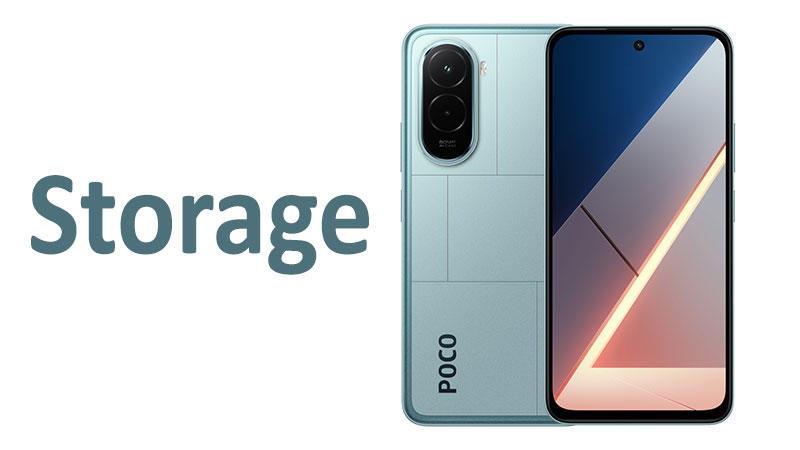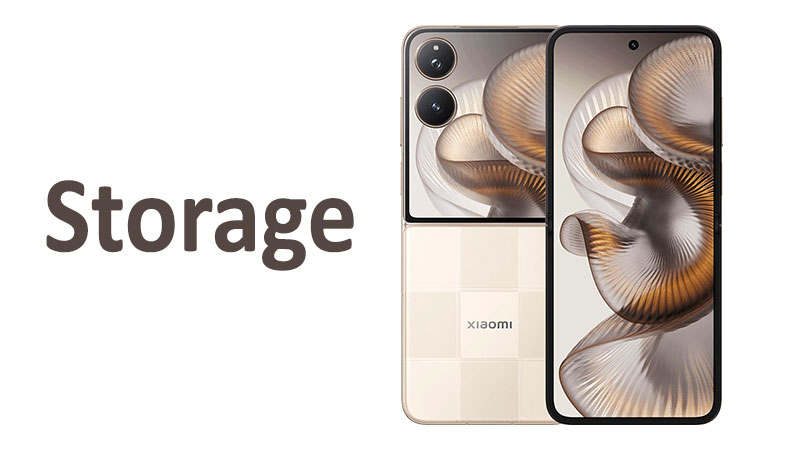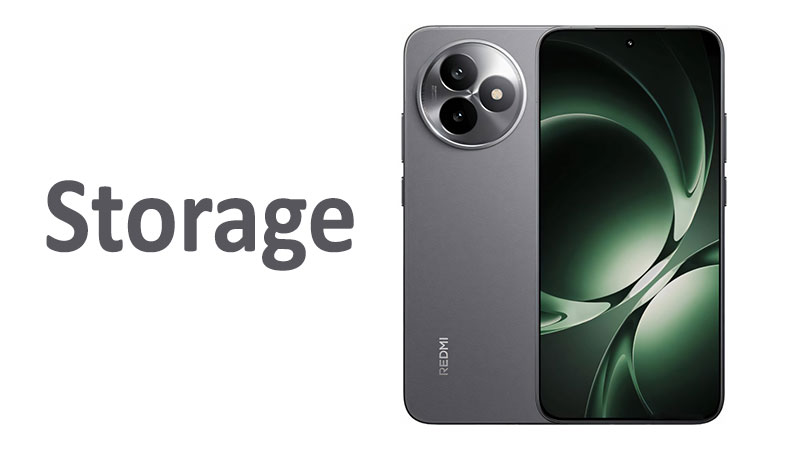In the world of modern smartphones, storage is a key feature. It affects everything from the number of photos and videos you can save to the speed of your apps. The Xiaomi Poco M7 Plus, a popular budget-friendly device, offers a compelling package. However, understanding its storage options is crucial before you buy. This comprehensive guide breaks down the Xiaomi Poco M7 Plus storage, covering its capacity, type, and expansion capabilities. We will explore how these features impact your daily use and compare them to previous models and competitors.
Understanding Xiaomi Poco M7 Plus Storage: A Deep Dive
The Xiaomi Poco M7 Plus is designed to offer a balanced user experience. Its internal storage configuration is a significant part of this. The phone comes with a standard internal storage capacity, paired with a modern storage type for fast performance. It also provides flexibility for users who need more space. This combination makes it a strong contender in its price segment.
Internal Storage Capacity
The Xiaomi Poco M7 Plus comes with a single internal storage variant. This is a 128GB capacity. While some devices in a similar price range offer multiple options, Poco has streamlined its offering. This 128GB of internal storage is sufficient for many users. It can comfortably hold a large number of apps, photos, and videos. For the average user, this capacity is more than enough for everyday needs.
- Comparison with Previous Models: The Poco M6 Pro offered a similar 128GB storage option. However, the M7 Plus aims to standardize this capacity. The consistency in storage size across generations shows a trend towards providing a solid baseline for all users.
- Comparison with Competitors: Many competing smartphones in the budget segment also start with 128GB of internal storage. Some might offer a 256GB variant, but these typically come at a higher price point. The M7 Plus’s 128GB is a competitive starting point.
Storage Type: UFS 2.2
The type of storage technology used is just as important as the capacity. The Xiaomi Poco M7 Plus utilizes UFS 2.2 storage. UFS stands for Universal Flash Storage. It is a standard for internal storage in modern smartphones.
UFS 2.2 offers a significant speed advantage over older eMMC storage. It allows for faster data read and write speeds. This translates to a more fluid user experience. Apps launch quicker, and file transfers are completed in a fraction of the time. The improved performance is noticeable in daily tasks.
- Pros of UFS 2.2:
- Faster App Loading: Apps and games load in seconds, reducing waiting times.
- Quick File Transfers: Moving large files, like videos or photo albums, is fast and efficient.
- Improved System Responsiveness: The entire operating system feels snappier and more responsive.
- Cons of UFS 2.2:
- Not the Fastest: While UFS 2.2 is fast, it is not the latest standard. High-end devices use UFS 3.1 or UFS 4.0. These newer technologies offer even greater speeds. However, for a mid-range phone, UFS 2.2 is an excellent choice.
- No noticeable drawback for daily tasks: The performance difference is minimal for the average user compared to a UFS 3.1. It is mostly evident in benchmark tests or extremely demanding applications.
Storage Expansion: The Hybrid SIM Slot
A key feature of the Xiaomi Poco M7 Plus storage is its expansion capability. The phone supports a microSDXC card. This allows you to add a memory card to increase the total storage. The phone’s specification states that it supports microSDXC cards, which means it can handle cards with very large capacities.
However, there’s a crucial detail to note: the card slot is a hybrid SIM slot. This means you cannot use two SIM cards and a microSD card simultaneously. The tray has space for either:
- Two Nano-SIM cards for dual-SIM functionality.
- One Nano-SIM card and one microSDXC card.
This design is a common trade-off in many budget and mid-range smartphones. It forces the user to choose between expanded storage and dual-SIM functionality.
- Pros of Storage Expansion:
- Massive Additional Storage: You can add up to 1TB or even 2TB of external storage. This is ideal for users with large media libraries.
- Flexibility: You can easily swap out memory cards. This is great for photographers or videographers who fill up space quickly.
- Cost-Effective: Buying a large capacity microSD card is often cheaper than upgrading to a phone with more internal storage.
- Cons of the Hybrid SIM Slot:
- Compromise on Functionality: You have to give up a second SIM card slot to use the expandable storage. This can be a deal-breaker for those who need two active phone numbers.
- Potential for Slower Speeds: While UFS 2.2 is fast, the speed of a microSDXC card depends on its class. A low-class card may be much slower than the internal storage. This can affect app performance if you install apps on the SD card.
Important Points for a Buyer
- Assess Your Needs: Before you buy, think about your storage requirements. If you primarily use streaming services and don’t take many photos or videos, the 128GB internal storage will be sufficient. You may not need a microSD card.
- Consider Dual-SIM vs. Storage: If you need two separate phone numbers for personal and work use, the hybrid slot might be a problem. In this case, you will be limited to the 128GB internal storage. If you need more storage, you’ll have to choose between a single SIM card or a different phone model.
- Invest in a Good microSD Card: If you plan to use the microSDXC card slot, don’t skimp on quality. A high-speed card (like a Class 10 or a V30-rated card) will ensure better performance. It will also prevent bottlenecks when transferring files.
- The OS and Pre-installed Apps: Remember that the total advertised storage is not fully available. The Android OS and pre-installed system apps take up a significant portion of the space. Out of the 128GB, you will likely have around 110-115GB of usable storage. This is a standard practice on all smartphones.
Conclusion
The Xiaomi Poco M7 Plus offers a well-rounded and competitive storage solution for its target market. With a base internal capacity of 128GB and UFS 2.2 technology, it provides a fast and reliable user experience. This configuration is more than adequate for the majority of users, ensuring smooth app performance and ample space for personal data.
The inclusion of a microSDXC card slot is a major plus. It provides a flexible and affordable way to expand your storage. However, the hybrid SIM slot design presents a notable trade-off. This forces users to choose between using a second SIM card and adding a memory card. This is a critical factor for prospective buyers to consider.
Overall, the Xiaomi Poco M7 Plus storage is a strong point for the phone. It is a solid choice for those who value performance and flexibility in a budget-friendly package. The combination of fast internal storage and the option for significant expansion makes it a top contender in its class. Just be mindful of your specific needs regarding dual-SIM usage.
FAQ
No, the Xiaomi Poco M7 Plus has a hybrid SIM slot. This means you can either use two SIM cards or one SIM card and one microSD card. You cannot use all three at the same time.
The Poco M7 Plus supports microSDXC cards, which can handle capacities of up to 2TB.
The Poco M7 Plus uses UFS 2.2 storage. This is a modern and fast storage type that provides quick app loading and data transfer speeds.
Yes, for the average user, 128GB is more than enough. It can store thousands of photos, hundreds of videos, and many apps. For power users, the expandable storage option is available.
Using a high-speed microSD card (like a Class 10 or V30) for storing photos, videos, and music will not significantly impact performance. However, installing apps directly on a slower microSD card can affect app loading times. It’s best to use the internal storage for apps and games.



